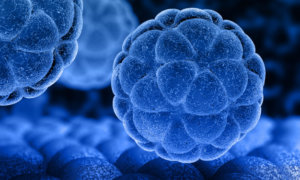Projection mapping, colloquially known as 3D mapping, has many things in common with video mapping and spatial augmented reality. Mappers use a projection technique to turn objects with unusual shapes and sizes into a 3D render of the scanned article. From buildings to small objects or even complex scenery, 3D mapping has evolved to the point that no task is too big for the technology.
We came far from the 1992 film The Lawnmower Man’s virtual programs. Now, 3D mapping software can accurately plot even a small object, at an atomic scale, which is amazing onto itself. This breakthrough in 3D mapping can lead to an original way of studying atoms, and in the process, shed more light on the cradle of life.
Atom probe tomography is a branch of 3D mapping that has been used to map and discover the oldest molecular fluids in the Solar System, which are considered to be the building blocks of life. Scientists believe that these molecular fluids could have lead to the development of amino acids and, eventually, intelligent life.
An international group of scientists coordinated by researchers from the Royal Ontario Museum and experts from McMaster University and York University, employed 3D mapping to catalog individual atoms in minerals formed in fluids on an asteroid over 4.5 billion years ago.
Studying the Tagish Lake meteorite, the team used atom-probe tomography to mark molecules along boundaries and pores, separating magnetite grains that likely formed on the asteroid’s coat. The scientists discovered water precipitates left in the grain limits on which they conducted their investigation.
The research was made possible, in part, thanks to the nature of the meteorite, which has never been exposed to above room temperatures or liquid water.
This proves that water was present in the early Solar System, before the birth of life and, even more important, this evidence is the first of its kind.
We know that water was abundant in the early solar system, but there is very little direct evidence of the chemistry or acidity of these liquids, even though they would have been critical to the early formation and evolution of amino acids and, eventually, microbial life.
Dr. Lee White, the lead author of the project, stated
The research can give us a better understanding of extraterrestrial samples which will prove extremely lucrative for the team and the human race.
Space missions are limited to bringing back tiny amounts of material, meaning these techniques will be critical to allowing us to understand more about the solar system while also preserving material for future generations.
Cataloging and researching asteroids from Mars or the Moon is only one of the applicable uses of 3D mapping, and going forward is imperative to collect more data from across the Solar System.
Follow TechTheLead on Google News to get the news first.























